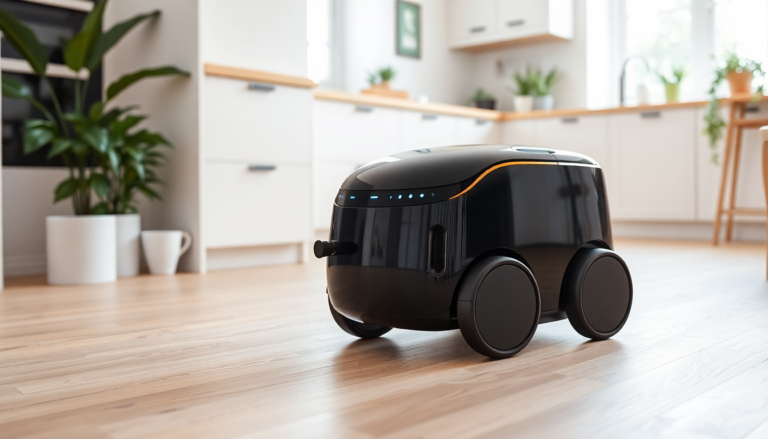Argomenti trattati
In a world where technology is constantly reshaping our daily lives, the idea of a DIY voice-controlled robot cart sparks both excitement and curiosity. This project could not only add a touch of convenience but also significantly enhance the quality of life for individuals with limited mobility. Just picture a cart smoothly navigating your home, responding to your voice commands, and lending a hand with everyday tasks. Sounds amazing, right? But while this concept is captivating, it does lead us to ponder its feasibility and practicality.
Getting to Grips with the DIY Robot Cart Concept
To kick off this project, you might want to consider using an IKEA RÅSKOG trolley. This versatile and compact cart is perfect for modifications. By integrating Arduino technology, you could potentially whip up a functional prototype that zips around your home. However, the success of such a device really hinges on its ability to dodge obstacles, recognize its surroundings, and operate safely—imagine the chaos if it were to bump into pets or furniture!
While we’ve seen robot vacuums making leaps in home automation, a DIY robot cart brings its own unique set of challenges. It needs to not only carry items but also manage the weight of its cargo without tipping over. This calls for a sturdy design that includes a powerful battery and motor system, plus an array of sensors to help it navigate. It’s a complex task that demands a blend of creativity and technical know-how.
Challenges and Considerations in Development
One of the biggest hurdles you’ll face is creating an effective navigation system. The robot will require a suite of sensors to detect obstacles and modify its path accordingly. Think of it like the tech that powers autonomous vehicles—years of research and development have gone into that! Although a DIY version may not reach the same level of sophistication, with the right components and design, you could still create something functional.
Cost is another critical factor to consider. While the prices for components like motors and batteries have come down, the overall investment in building a reliable and safe robot cart can still be pretty substantial. It’s important to balance the potential benefits against the financial commitment, especially if you’re not a seasoned engineer. Plus, the learning curve associated with programming Arduino and integrating various technologies might feel steep, which could discourage some from pursuing this ambitious endeavor.
Practical Implementation and Future Possibilities
If you’re ready to dive into this DIY adventure, a great starting point would be to research existing robot vacuum designs—they share similar operational needs. Upgrading an existing robot with more robust motors and a better battery might be a practical first step. Additionally, tapping into open-source software and community resources can provide invaluable insights and inspiration as you navigate the development process.
As you refine your design, keep an eye on key performance indicators (KPIs) like responsiveness, navigation accuracy, and load capacity. Iterative testing and adjustments will help ensure that your final product meets its intended goals. Moreover, as technology continues to advance, incorporating breakthroughs in AI and machine learning could elevate your robot’s capabilities, setting the stage for even smarter home automation solutions. Are you ready to take on this exciting challenge?

